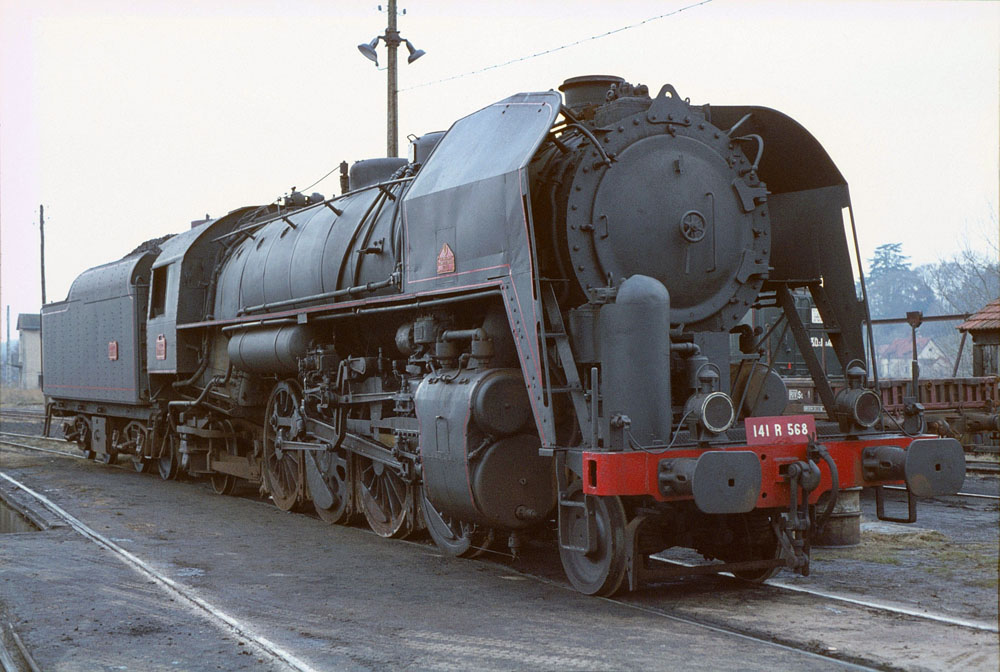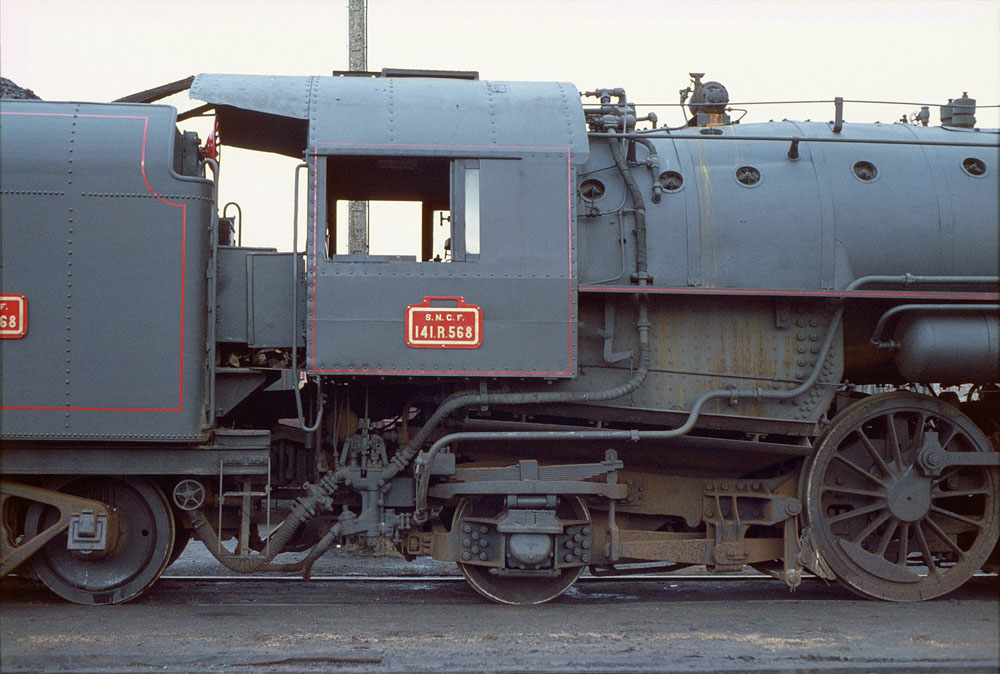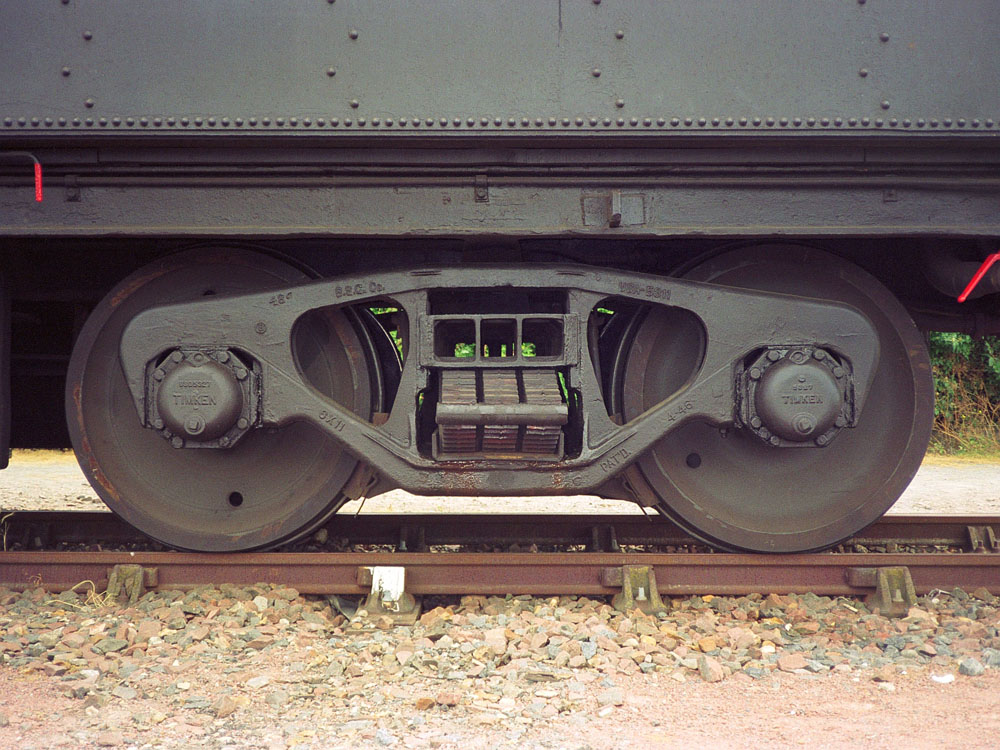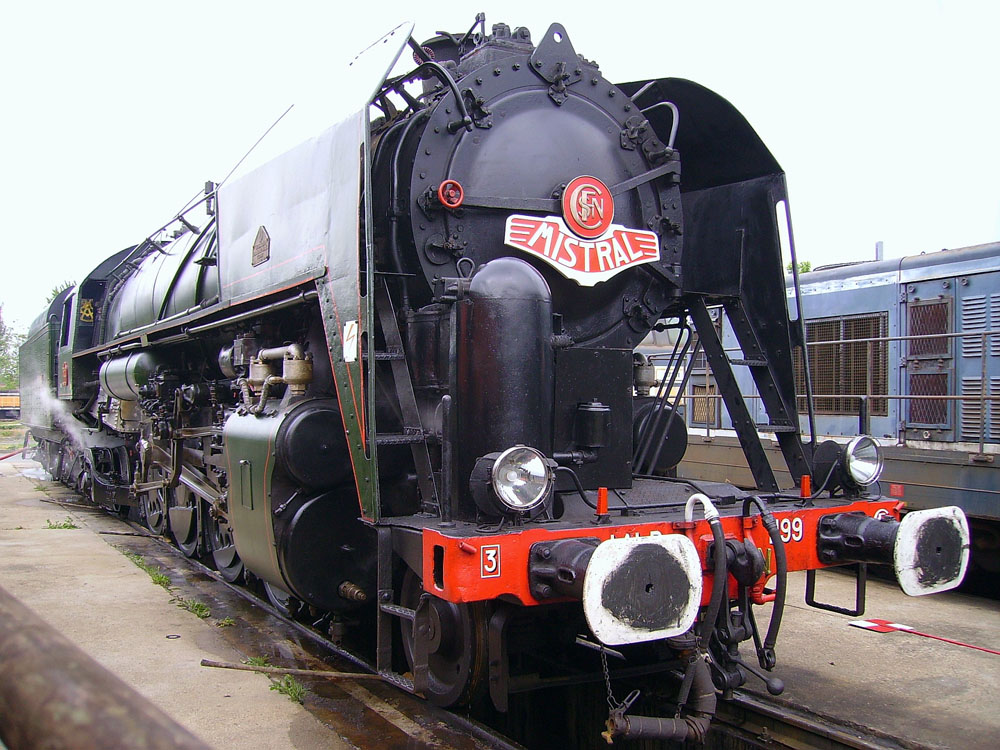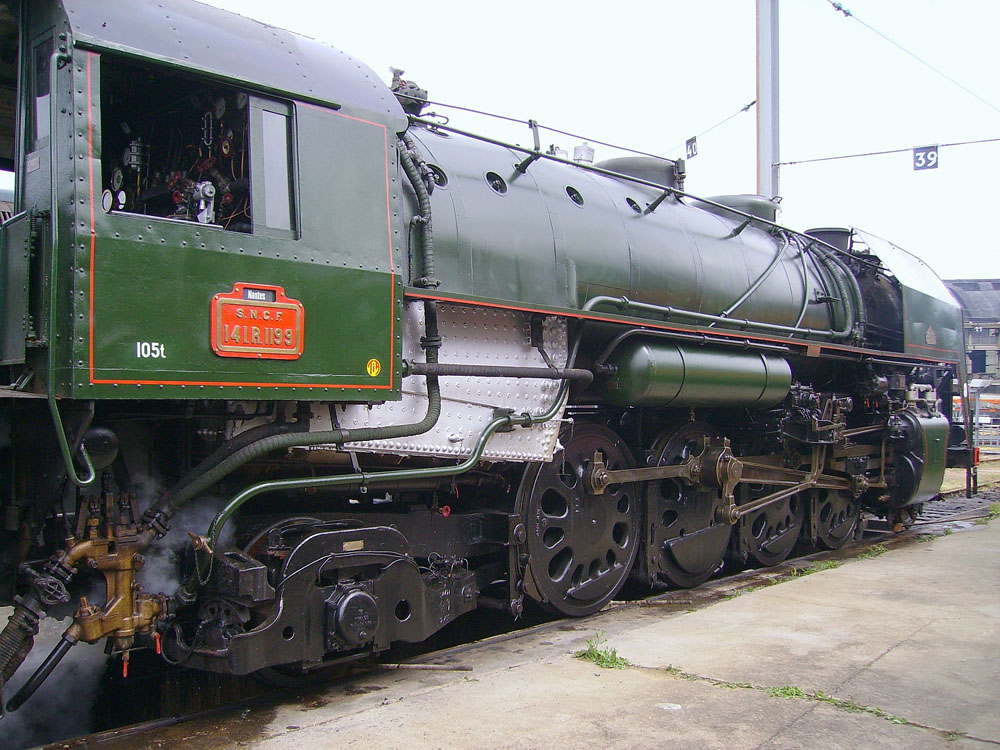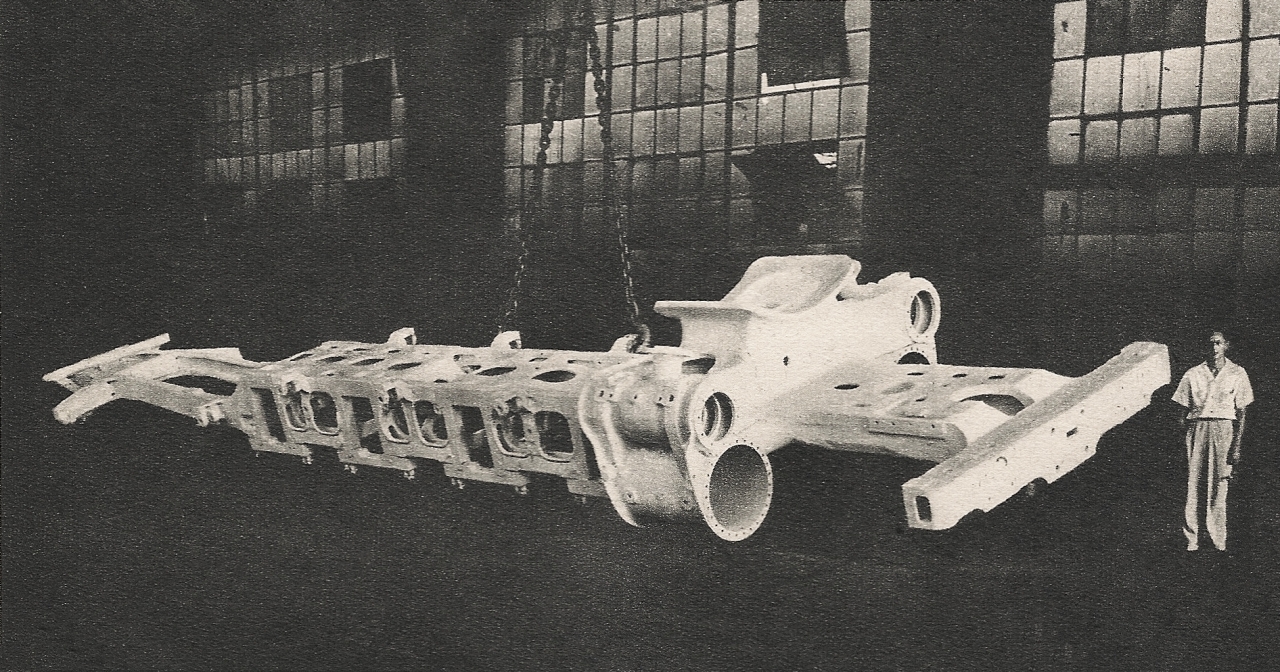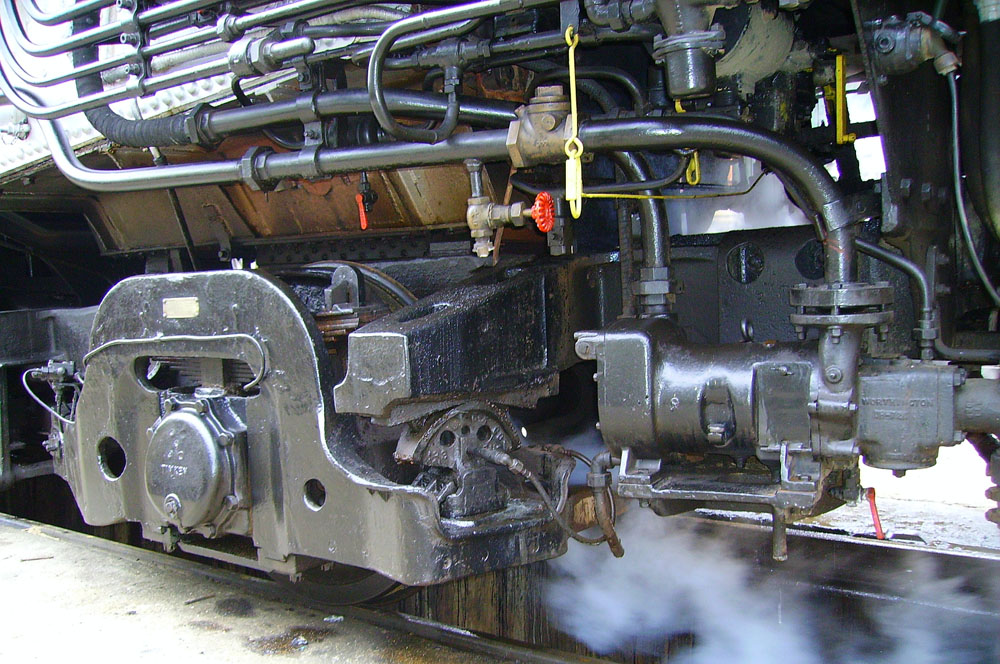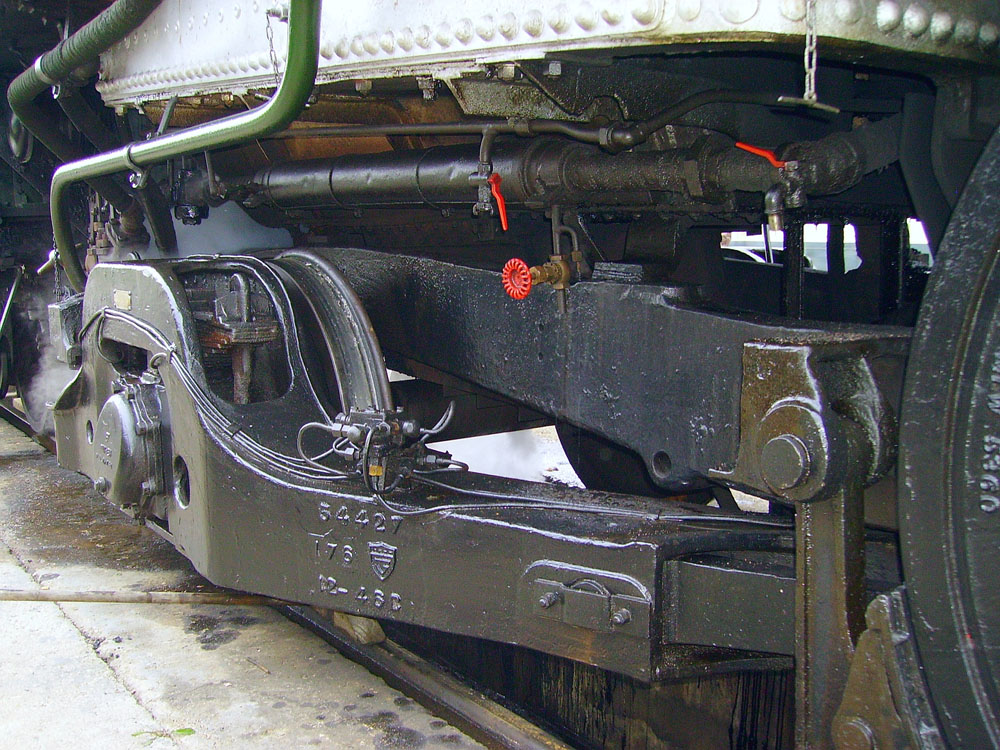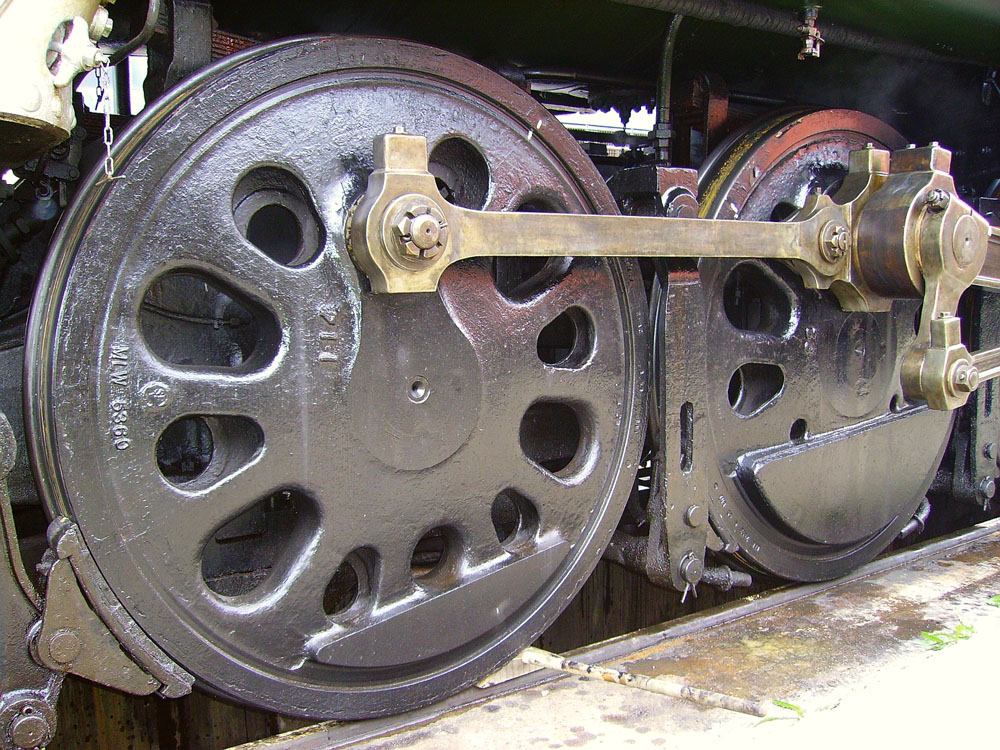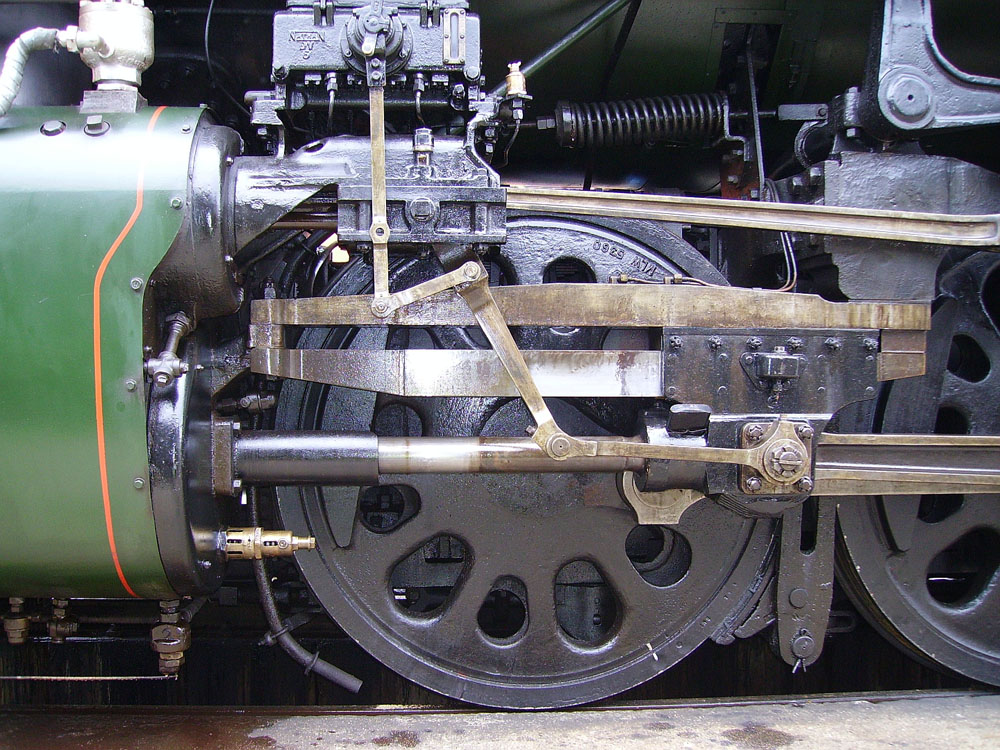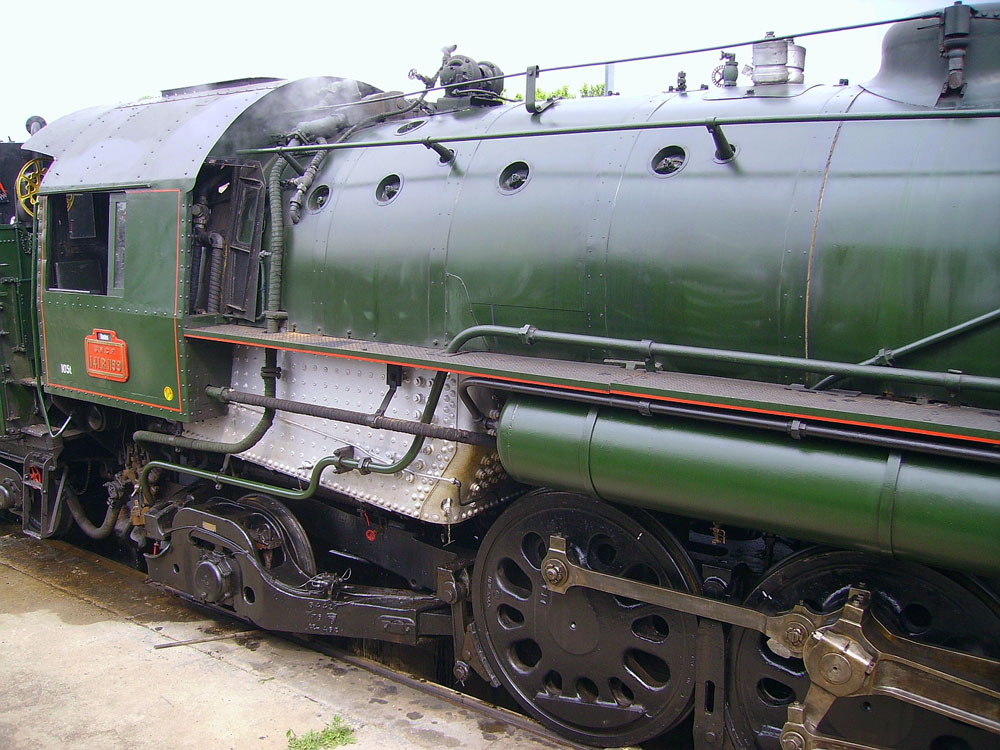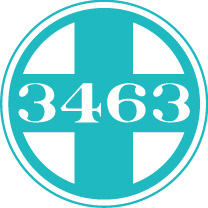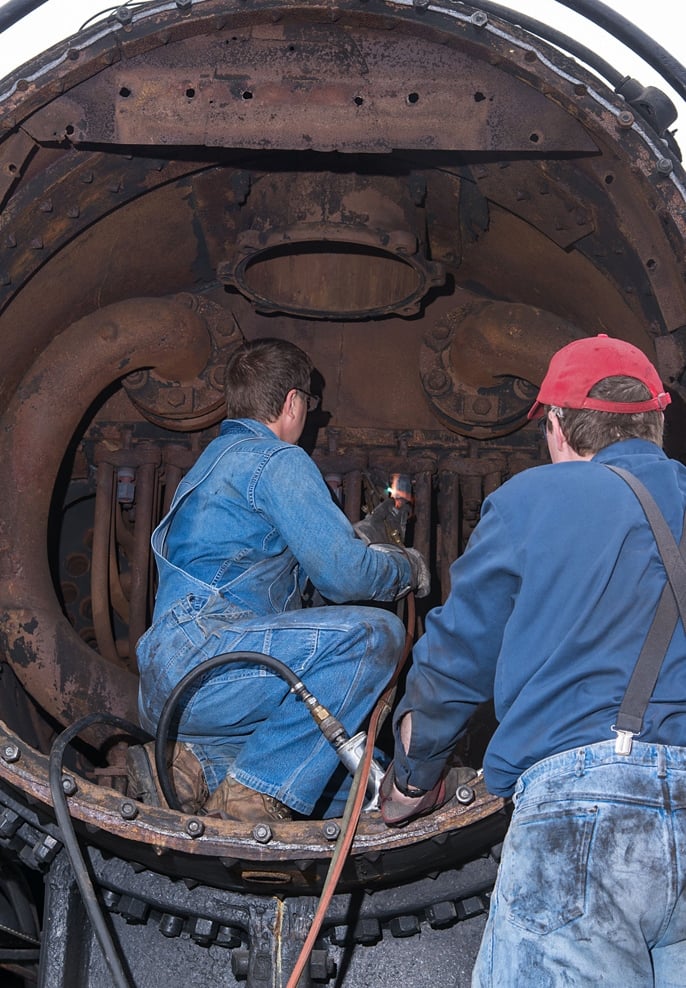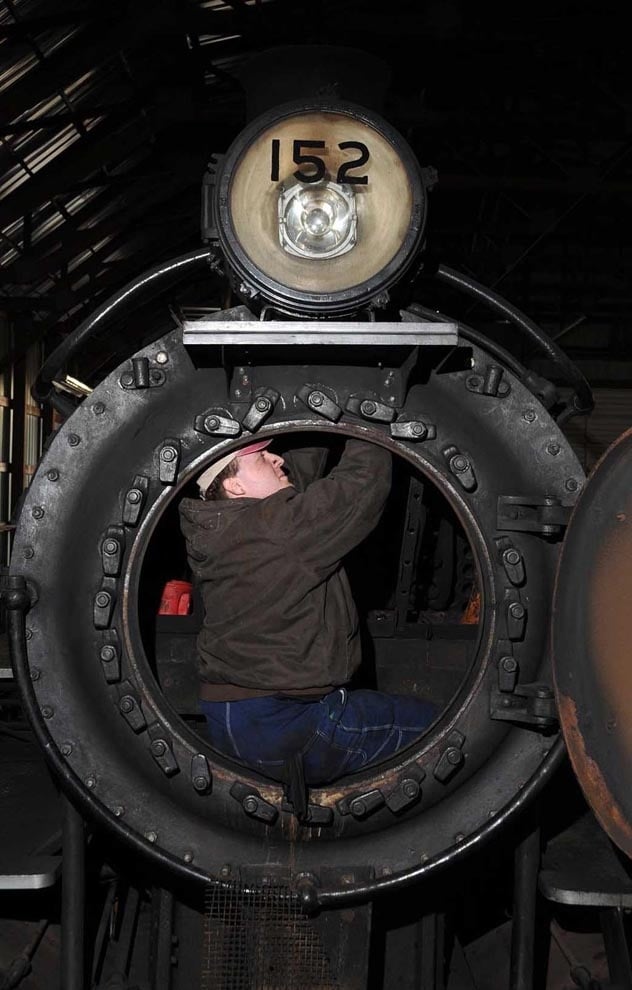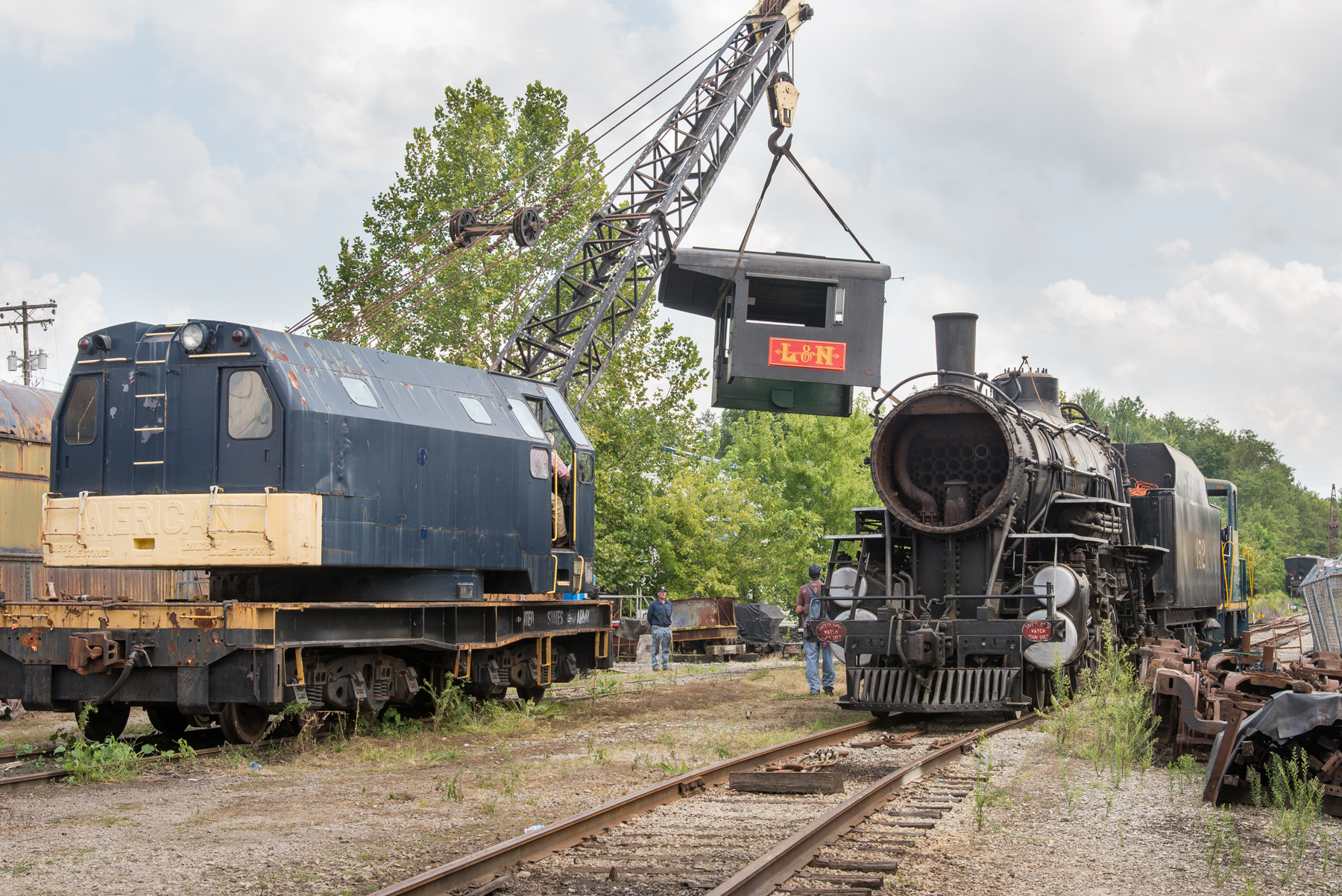Today is "Pi Day" - the date of 3-14.16. Pi was very important to railroad engineers of yesteryear, and not just the dessert-type.
Balancing of steam locomotive driving wheels was an engineering exercise subject to much trial and error (and some success). One term often thrown around in steam locomotive technical pieces is "Diametral Speed," or the the speed when the diameter of the driving wheel (in inches) equals the speed (in mph). This “Diametral Speed” occurs at 333RPM thanks to the relationship between the circumference of the driving wheel (2πr).
Thus, when the 84” diving wheels of an ATSF 4-6-4 are rotating at 333 RPM, the locomotive is traveling at 84 mph. Likewise, when the 60” wheels of a Chinese QJ are spinning at 333 RPM, that locomotive is traveling 60 mph, and so on. Since a steam “engine,” like an automotive “engine,” is limited by maximum rotational speed (read: “redline”) at approximately 550 RPM, the larger the wheel, the higher the speed. But, since the power range of steam locomotives depend partially on the flow of steam through the pistons at certain RPMs, the smaller-wheeled locomotives develop maximum horsepower at lower speeds, which is why small driving wheels were used on freight locomotives moreso than passenger locomotives.
As to this advertisement, when cast steel wheels of Boxpok and Baldwin Disc variety came onto the scene in the late 1930’s, they allowed railroads to improve balance and reduce dynamic augment (track forces attributable to overbalance) since they were significantly lighter (and stronger!) than the traditional spoked wheel. This 1937 Baldwin ad outlines the significant improvements. More info on balancing can be found in CSR's White Papers on Steam Locomotive Balancing -www.csrail.org/whitepapers
Regardless, we hope you had a chance to eat some “pi” yesterday. Enjoy your #techtuesday!




